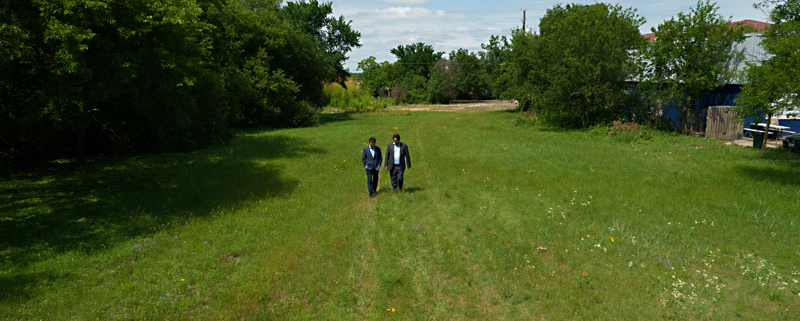Solving Georgian Acres’ Mobility Problem With Buses, Bikes, and Scooters
Solar-powered mobility hub planned for “transit desert”
Article from the Austin Chronicle
BY LINA FISHER, FRI., OCT. 1, 2021
The Austin Transportation Department‘s Smart Mobility Office, UT-Austin, and local nonprofit Jail to Jobs are joining forces to build a transit hub in the Georgian Acres neighborhood in North Austin, with the goal of bringing more transportation services to one of the city’s transit deserts.
Currently, commute times for Georgian Acres residents are 67% longer than the city average. Although the roughly 2-square-mile area has a major transportation hub nearby – the North Lamar Transit Center – it’s boxed in by U.S. 183 and I-35, making it hard for residents to easily access those transit services. This lack of connectivity between transportation modes is an example of the “first-mile, last-mile” problem, explains project lead Junfeng Jiao, an associate professor of community and regional planning at the UT School of Architecture, and it can be seen in many cities across the U.S. “Some neighborhoods have sacrificed accessibility to state highways, and the residents have a hard time accessing the nearby transportation system.”
An interdisciplinary research team at UT is working with the Smart Mobility Office to design a hub for Georgian Acres that aims to offer a bikeshare system, e-scooters, and circulator buses. A shelter with a solar-paneled roof will power the station, which will offer free Wi-Fi, electric vehicle charging stations, a food pantry, and a mobile health clinic. Funded by $50,000 from the National Science Foundation’s Civic Innovation Challenge, the project’s first phase involved outreach efforts to the community to gauge their transportation habits and needs.
From these conversations, Hannah Barron, who led the community engagement, learned that many Georgian Acres residents lack consistent transportation options. Residents might not always have access to a vehicle, and if they do, it might be shared among family or friends or unreliable. “It really becomes a point of desperation,” said Barron, explaining how transportation security might impact residents’ ability to reach their jobs. There are also safety concerns for that first or last mile to the bus stop, added Barron. “I had one woman say to me, ‘Look, the closest bus stop is four blocks from here, but there’s no way I’m gonna let my grandson use that.'”
Two retired Capital Metro buses donated to the project by the transit authority will be used as circulators, traveling from the hub to nearby destinations like the Transit Center or the closest grocery store. Residents also wanted a bikeshare system, so the team plans to incorporate micromobility solutions for the hub, including bikes and e-scooters. Residents said they need a communal gathering space, too, said Jiao, so the project team decided to equip the hub with Wi-Fi. They may also add a food pantry or small cafe on-site – facilities that Jiao envisions as akin to a very small European train station where riders can get something to eat while they wait.
The project’s nonprofit partner, Jail to Jobs, helps recently incarcerated youth get connected to employment and is based in Georgian Acres. Jail to Jobs founder Chris Haskins described the hub as a natural fit: “[We] already had ties to the community, and our teams can be hired to run the project.” Jail to Jobs will subcontract with the city to employ its clients to drive the circulator buses, staff the transit hub, maintain the bikeshare and scooters, and oversee security. “It provides a new opportunity for us to send our youth into new industries, connecting them with scooter companies and most importantly, the city itself. It obviously provides a great amount of jobs, pretty well-paid, with benefits. So to be able to have this experience, and maybe parlay that into working for the city, is a huge win for our youth.”
Beginning Oct. 1, stage two of the project will be fueled by $1 million from the NSF grant to finalize the design – a process that Jiao expects to be finished by December – and to build the hub itself. But Barron stresses, “The last thing we want to do is bring something into the community that is not sustainable.” Because the project is mostly grant-funded, it’s unclear if that circulator bus service can continue far into the future. “Obviously I want this to be a job creator for the neighborhood,” said Jiao, “but we only get so much money, so we can just start very small.” Jiao hopes it serves as a sort of pilot for a network of transit hubs throughout Austin and could dovetail potentially with Project Connect.
“We’re having additional conversations with community partners, like Capital Metro[‘s] Transit Empowerment Fund,” said Barron, “looking at how this is sustainable going forward. Infrastructure, the mobility hub itself, and micromobility providers – they’ll continue to be in the space past the year, but the challenge will be figuring out funding for how long the neighborhood circulator can stay in route. … That’s part of this pilot.”



